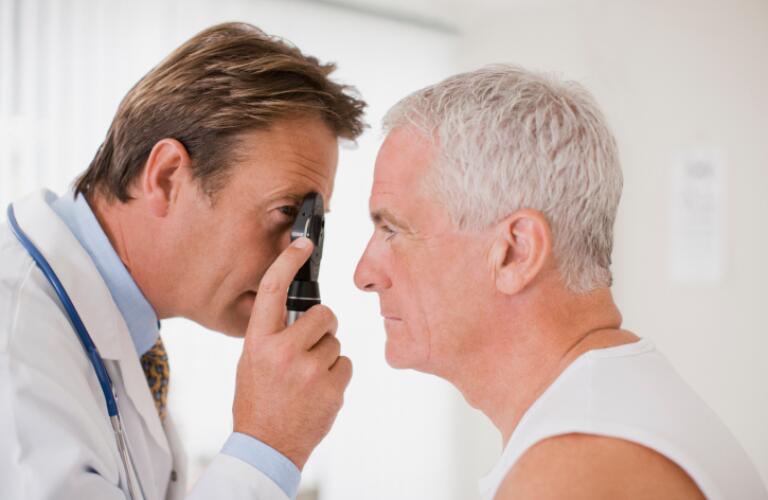
As an eye specialist, or ophthalomogist, I see patients suffering from dry eye every day. Some experience dry eye as a result of wearing contact lenses, some stare at computer screens all day, some develop dry eye after eye surgery, and some experience dry eyes as a medication side effect. Whatever the cause, chronic dry eye can be a frustrating and challenging condition to live with, as it causes eye redness, irritation, itching, and other symptoms. Here are some tips I share with my patients about managing their chronic dry eye.
1. Dry eye is a real disease—and it’s important to treat it.
I always tell patients that dry eye isn’t just a nuisance, it’s an actual condition. It’s something you have to pay attention to and treat in order to avoid lasting eye damage and even vision loss. If you have persistent dryness on your cornea, scar tissue can form that can block parts of your vision. Sometimes, patients develop so much scar tissue that it needs to be surgically removed. But you don’t have to get to that point—the good news is there are medications available that successfully treat dry eye, and even more are coming down the pipeline.
2. The right treatment is out there.
Some patients have mild dry eye, so I recommend they purchase over-the-counter (OTC) artificial tears in the form of eye drops. These tears are kind of like lotion for your eye. But in many cases, they’re not enough. Dry eye has two primary causes: either you’re not producing enough tears, or your tears are evaporating too quickly. If you’re not producing the tears you need, those OTC drops aren’t going to solve the problem. We’re still researching the mechanisms behind dry eye, but we believe localized inflammation in the eyes reduces tear production. That’s why I’ll often prescribe medications that lower inflammation. Currently, there are two prescription eye drops available: cyclosporine (Restasis) and lifitegrast (Xiidra). They don’t work immediately, as it takes time to reduce inflammation levels, so sometimes I’ll also prescribe temporary steroidal eye drops like loteprednol (Inveltys, Eysuvis) in addition to one of the other prescription medications. After a few weeks or months, though, cyclosporine and lifitegrast start to work, and my patients tell me they’re happy to finally find relief. It's also important to know that newer, innovative therapies are in the pipeline nearing FDA approval. Never hesitate to ask your eye doctor, "What's new?" For example, varenicline (Tyrvaya) is a FDA-approved nasal spray dry eye treatment that stimulates the nerve associated with tear expression.
Oftentimes, a mix of everything is best. Some patients taking the medicated eye drops still experience slight discomfort during the day, so I tell them they can try OTC eye drops as well. I caution them to stay away from eye drops with preservatives and make sure they don’t buy redness-relieving drops, because they don’t treat dry eye effectively and can actually make it worse. And I’ll make sure my patients know their eye drops can cause burning and stinging at first, but that will go away over time. I’ll also sometimes recommend patients receive punctal plugs, which are small plugs shaped like mushrooms that are placed in the tear ducts to slow down how quickly tears are cleared from the eye. However, they often fall out and are really only a temporary fix. Now that the prescription eye drops are available, I use punctal plugs less and less.
3. Lifestyle changes can help, too.
If a patient has mild dry eye, I might not jump to medications right away. Along with OTC artificial tears, I’ll recommend they change certain behaviors. If they’re staring at a computer screen for 12 hours without breaks, I emphasize how important it is to close the eyes every so often. I tell them to shift their focus at least a couple times an hour, because dry eye can be related to eye strain. If you focus on an object that’s far away, then look at an object that’s closer to you, it gives your eyes a break. And it’s important that patients with contact lenses take them out when possible—wearing them all day is going to make dry eye worse. I also suggest patients use humidifiers in the bedroom so their eyes don’t dry out overnight.
Patients will also often ask me if they can take a vitamin or supplement to help with dry eye. I recommend trying an Omega-3 fatty acid supplement, because they’ve been shown to help with dry eye (and they’re great for heart health, too). I’m also an advocate for staying well hydrated throughout the day.
4. Dry eye is a chronic disease.
Just like diabetes and hypertension, dry eye doesn’t really ever go away for most people. It can be successfully managed with medication and lifestyle changes so patients don’t feel symptoms anymore, but unless it’s directly related to a side effect from medication or surgery, dry eye tends to wax and wane over time. Some patients who undergo eye surgery like LASIK may have some temporary dry eye, and that usually gets better over time. But for most dry eye patients, it’s about maintenance and control. Find the right treatment, stick with it, and check in regularly with your doctor to manage dry eye.
5. Developing a strong relationship with an eye specialist is key.
In the past, when we didn’t understand dry eye as well, doctors often recommended that patients try eye drops and then didn’t follow up with them. Today, more doctors are aware of dry eye, but it’s still important to seek out an eye specialist, called an ophthalmologist, because they will have the experience and training to effectively treat your condition. Everyone’s treatment plan is going to be different, so it’s crucial to work with an ophthalmologist to find the right strategy for you.










